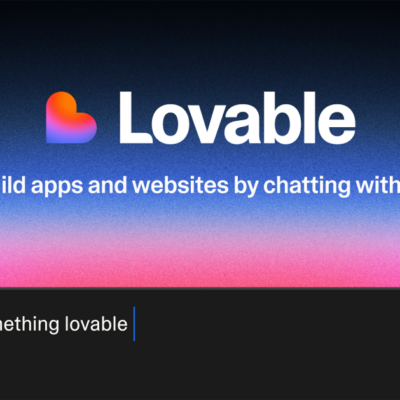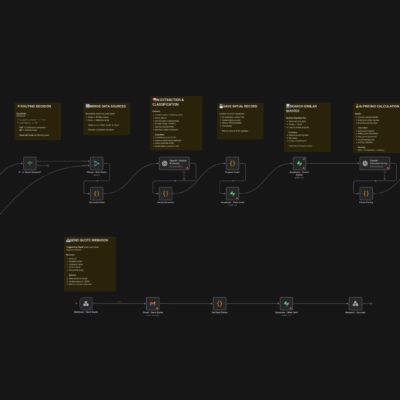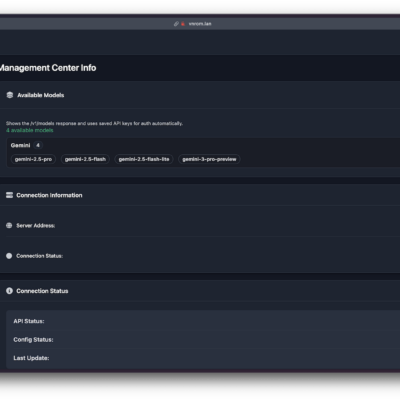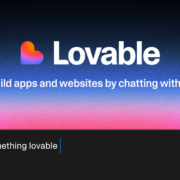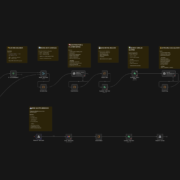In today’s digital landscape, video content drives 157% higher organic traffic and generates 12x more shares than text and images combined. Yet marketers face an ongoing struggle: delivering compelling video content that stands out while racing against tight deadlines and budget constraints. Enter AI video effects – a revolutionary technology that’s reshaping the marketing landscape. As brands seek to capture audience attention in increasingly crowded spaces, AI-powered video tools offer a promising solution by automating complex processes, enabling rapid content creation, and unlocking new creative possibilities.
The question isn’t just whether AI can enhance your video campaigns – it’s how dramatically it can transform your marketing outcomes. From slashing production times and costs to enabling personalization at scale, AI video effects are proving to be more than just another tech trend – they’re becoming an essential tool in the modern marketer’s arsenal.
The Generative AI Revolution in Video Marketing
Generative AI represents a paradigm shift in video content creation, utilizing deep learning algorithms to analyze, generate, and manipulate visual elements in ways previously impossible. This technology has evolved from basic filters to sophisticated systems capable of understanding and replicating complex visual patterns. Modern AI video tools like Kling AI excel in three core capabilities: real-time rendering that processes effects instantaneously, style transfer that can transform footage to match specific aesthetic requirements, and automated editing that intelligently cuts and arranges scenes. These advances have dramatically compressed production timelines – what once took days now takes hours, with some effects applied in mere minutes.
Budget implications are equally significant, with AI tools reducing the need for expensive equipment and specialized staff. Industry adoption reflects this transformation, with 64% of marketing teams now incorporating some form of AI in their video production workflow. Leading brands report cutting production costs by up to 70% while increasing their video output threefold. This revolution isn’t just about efficiency; it’s fundamentally changing how marketers approach video creation, enabling rapid experimentation and iteration that was previously impractical.

Essential AI Video Tools for Marketers
Today’s AI video creation landscape offers marketers a robust toolkit that transforms complex production tasks into streamlined workflows. At the foundation are photo animation platforms that breathe life into static images, converting them into dynamic video content through sophisticated motion synthesis algorithms. These tools excel at creating engaging social media stories and product demonstrations from existing visual assets. AI-generated video platforms take creativity further by enabling complete video production from text prompts, incorporating natural language processing to understand creative intent and generate corresponding visuals.
Special effects generators leverage computer vision to add professional-grade effects, from background removal to advanced motion tracking, without requiring technical expertise. Most platforms integrate seamlessly with popular marketing suites through REST APIs and native plugins, allowing teams to maintain existing workflows while enhancing capabilities. The learning curve varies by tool, but most emphasize intuitive interfaces with drag-and-drop functionality and preset templates, making them accessible to marketing teams regardless of technical background. Advanced features like batch processing and automated versioning enable efficient content scaling, while built-in collaboration tools facilitate review and approval processes.
This democratization of video production empowers marketers to experiment with formats and styles previously reserved for professional production houses, all while maintaining brand consistency through customizable presets and style guides.

Transforming Campaigns: AI Video Use Cases
Boosting Social Media Engagement
AI video effects have revolutionized social media content creation by enabling rapid production of platform-optimized vertical videos. Marketing teams can now automatically reframe horizontal footage for Instagram Stories, TikTok, and YouTube Shorts while preserving key visual elements.
AI-powered tools analyze engagement patterns to suggest optimal video lengths and formats, increasing view-through rates by up to 40%. For UGC-style content, AI effects can replicate popular aesthetic trends, from vintage film looks to cutting-edge transitions, allowing brands to maintain authenticity while scaling content production.
Personalization at Scale
Dynamic video personalization through AI has unlocked unprecedented opportunities for targeted messaging. Marketers can now generate hundreds of product video variants automatically, adapting elements like color schemes, typography, and featured items based on viewer demographics and preferences.
The technology excels in localization efforts, automatically adjusting video content for different markets by changing language overlays, cultural references, and even background music to match regional preferences. Behavioral triggering capabilities enable real-time video content adaptation – for example, displaying weather-appropriate product recommendations or adjusting messaging based on the viewer’s position in the purchase funnel.
This level of personalization has shown to increase conversion rates by up to 35% compared to generic video content, while reducing production time by 80%.
Implementing AI Video: Step-by-Step Guide
Step 1: Content Strategy Alignment
Begin by evaluating your campaign objectives through the lens of AI capabilities. Focus on identifying content types that would benefit most from automation, such as product demonstrations requiring multiple variations or social media content needing rapid deployment. Conduct a thorough audit of existing visual assets, including photos, logos, and brand elements that could be enhanced or repurposed through AI effects. Map these assets against your content calendar to prioritize high-impact opportunities.
Step 2: Tool Selection & Workflow Setup
Select AI video tools based on your specific use cases and technical requirements. For social media content, prioritize platforms with strong vertical video capabilities and trending effect libraries. For e-commerce, focus on tools offering product visualization and personalization features. Establish clear approval workflows that balance automation with human oversight, incorporating checkpoints for brand consistency and quality control.
Step 3: Creative Execution
Master the art of prompt engineering by developing clear, detailed instructions that guide AI tools toward desired outcomes. Create a prompt library documenting successful formulations for different content types. Implement collaborative workflows where AI handles technical tasks like background removal and motion tracking, while human creators focus on storytelling and emotional resonance. Regular team training ensures optimal use of AI capabilities.
Step 4: Performance Optimization
Implement systematic A/B testing of video variants, examining factors like length, style, and call-to-action placement. Connect your AI video tools to analytics platforms for real-time performance tracking. Establish feedback loops where engagement metrics inform future content creation, continuously refining your approach based on audience response. Document successful patterns and share learnings across teams to accelerate optimization.
Navigating Challenges in AI-Generated Video
While AI video tools offer tremendous potential, maintaining brand consistency requires careful consideration. Establish clear brand guidelines specifically for AI-generated content, including acceptable ranges for visual styles, transitions, and effects. Implement a systematic review process that combines automated checks with human oversight to ensure AI outputs align with brand standards. On the ethical front, transparency is crucial – clearly disclose AI-generated content where required by platform policies or industry standards.
Quality control can be maintained through multi-stage validation: automated technical checks for resolution and frame rate, followed by human review for narrative coherence and emotional impact. To avoid the uncanny valley effect in AI-generated human figures or animations, focus on stylized rather than photorealistic approaches, or use AI primarily for enhancement rather than full generation. Future-proof your AI video strategy by diversifying tool providers, maintaining original assets, and regularly updating workflow documentation to adapt to algorithm changes.
The Future of AI-Powered Video Marketing
The integration of AI video effects represents a pivotal shift in marketing campaign execution, offering unprecedented opportunities for brands to scale their video content while maintaining quality and creativity. By automating time-consuming technical tasks and enabling rapid content iteration, AI tools are dramatically reducing production cycles from weeks to hours. The ability to generate personalized video content at scale, optimize for multiple platforms instantly, and adapt to real-time engagement metrics gives marketers a significant competitive advantage in today’s fast-paced digital landscape.
However, success with AI video tools isn’t about replacing human creativity – it’s about augmenting it. Start with small pilot projects, focusing on specific use cases like social media content or product demonstrations. Measure results, refine workflows, and gradually expand implementation as your team builds confidence and expertise. The future of video marketing lies in the strategic partnership between human insight and AI capabilities, creating campaigns that are both efficient and emotionally resonant. The time to begin this transformation is now.

